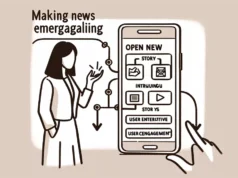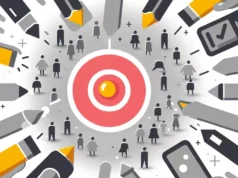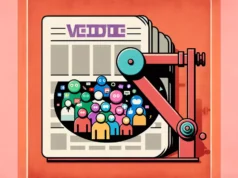In an era where vast amounts of data are more accessible than ever, a variety of fields are leveraging this wealth of information to inform, assess and even predict actions and outcomes. Journalism, as it turns out, is no exception. The rise of data journalism – the use of raw data to ground stories told in the media – has been swift and impressive, helping to shed light on complex issues through the power of numbers. This growing branch of journalism has transformed news stories, offering unprecedented clarity by distilling numbers into understandable and engaging narratives.
Data journalism is not entirely new; it’s an evolution of what was formerly known as computer-assisted reporting. But the advent of advanced technologies and the explosion of data availability have greatly amplified its possibilities. Journalists, armed with potent analytical tools, are now able to dig into massive datasets to build stories that stand on the robust but previously hidden bedrock of raw numbers.
Pause for a moment and consider the investigative projects of old, where journalists spent weeks, even months, sifting through paper archives to map connections, draw patterns, and uncover wrongdoings. Transforming that tedious process is data journalism. Today, a data journalist can pull up numerous databases, write a few lines of code, and within minutes, highlight trends, anomalies, and deeply buried stories unnoticed by traditional methods.
Take The Guardian’s datablog, for instance. They have famously used data journalism to track government expenditures, migrant deaths in and around the Mediterranean, and the pandemic’s international progress. Each of these stories paints a comprehensive picture, not just through compelling prose but through the patterns and realities the data unveils.
Human stories are the heart of journalism, and data journalism does not subtract from this principle. Instead, it enhances it with an empirical backbone. Today’s data journalism stands on a tightrope balance between human empathy and numerical objectivity. A poignant example is a Los Angeles Times’ investigation that used data to expose glaring inequalities in the temperature levels experienced across different L.A. neighborhoods. What emerged was a powerful narrative about social justice and urban planning drawn from raw numbers and geographical data.
The rise of data journalism has also democratized information in a very real sense. Readers are increasingly encouraged to delve into the datasets themselves, with news outlets often providing interactive visualizations and even access to the raw data. In a world where misinformation is rife, this transparent use of data can build an essential line of trust between the media and the public.
However, with great power comes great responsibility. Picking up a story from a massive dataset requires intense precision and care. The datasets themselves can often be messy, filled with disparities and missing values, which, if not handled correctly, can lead to incorrect conclusions. Furthermore, the data must always be holistically understood within its cultural, social, and temporal context to prevent misguided narratives.
With artificial intelligence and machine learning becoming more rooted in our lives, data journalism will continue to evolve, using these technologies to further automate and refine data analysis. The future may see predictive stories based on data trends, opening up proactive opportunities for change, rather than reactive ones.
As we stand on the precipice of an information decade, prefixed by the burgeoning might of big data, we find journalism on data’s frontline. With the power to unlace complexity, underline justice, and underscore truth, data journalism is changing the way stories are told – through the compelling lens of numbers.
Sources:
1. “The Data Journalism Handbook”, edited by Jonathan Gray, Liliana Bounegru, and Lucy Chambers.
2. “Los Angeles Times” Investigation: “Mapping the Gaps Between the Haves and Have-nots”
3. The Guardian Data Blog: “Datablog”
4. Reporters Lab: “Data Journalism in the Newsroom” by Meredith Broussard
5. Harvard Business Review: “Data Journalism: A Primer for Marketers” by Thomas H. Davenport
6. Nieman Reports: “Data Journalism: What’s Next?” by Gianna Segnini.






